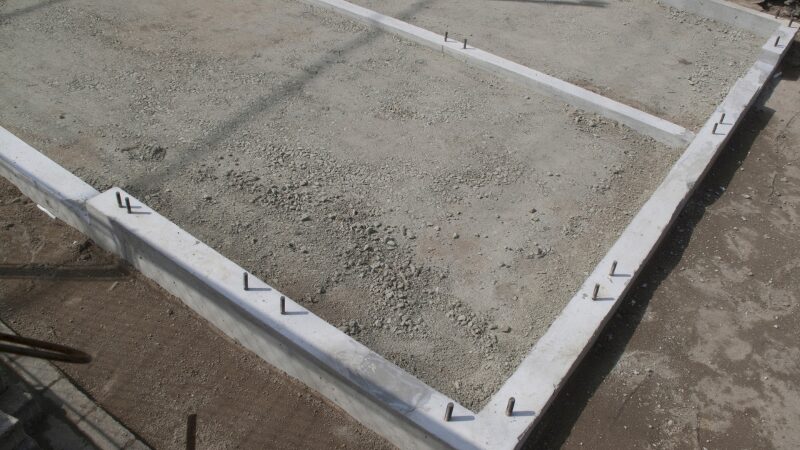Concrete is one of the most durable building materials available today. With its long lifespan, ease of maintenance, and high resistance to weather elements, a concrete foundation is more durable than any other type of foundation a Houston home might have. While these characteristics can make a homeowner think that a concrete foundation is indestructible, in reality, rainy or dry weather, as well as temperatures that are too high or too low, can negatively impact the structural integrity of any concrete structure.
Generally speaking, freezing temperatures and excess water are concrete’s worst enemies. However, a concrete foundation can be adversely impacted by some other factors that may be seen as less severe. For example, even slight changes in the moisture content and/or outdoor temperature could lead to different foundation problems.
To help Houston homeowners understand what steps they need to take in order to mitigate those problems, here is a basic overview of how temperature fluctuations can affect a concrete foundation.
Excess Moisture Can Affect a Houston Foundation
Warmer temperatures and longer days are two reasons why people love spring. However, this season can also spell trouble for your Houston home’s foundation. Since our area typically sees heavy rainfall from April onward, excess moisture can become a huge problem for your concrete foundation.
To begin with, moisture trapped underneath and/or within your concrete foundation could make steel bars, welded wire mesh, and any other steel elements used to reinforce your concrete foundation more susceptible to rust. Rusted steel is one of the most common causes of deterioration of reinforced concrete foundations. In addition, the structural wood used in your foundation and framing is more prone to developing dry rot and mold. Once structural wood gets damaged, it can compromise the structural integrity of your entire home.
Moisture can also damage paint, glue, as well as other materials that are in direct contact with your concrete foundation. For example, your exterior and interior walls, columns, stairs, drywall, and other components can absorb moisture from the foundation and then release it inside your home or transfer it to other elements at a later date. This may lead to mold growth and other problems that could ruin your carpets, doors, windows, and even furniture.
But there is another worrying aspect. Excess water underneath your home, which may result from heavy rainfall and poor yard drainage, could cause the soil under your foundation to become too wet. Overly wet clay soil can lose its ability to hold the structure above. This can result in uneven settling of your foundation, which is also known as differential settlement.
Soil Contraction and Concrete Expansion in Houston
Excess moisture and water are not the only problems that can lead to foundation damage during spring. As summer approaches, heat can also create a twofold issue for your home’s foundation.
On the one hand, higher temperatures could cause the ground underneath your home to lose moisture. When clay soil dries out, it tends to shrink considerably. This may lead to cracks forming beneath and around your foundation. When too many cracks develop in the soil under a slab-on-grade foundation, the concrete slab may start to settle unevenly and crack over time. In this type of foundation, cracks could also appear as a result of soil shrinking excessively and retracting from the structure. Because the slab is left without proper support underneath, the pressure exerted by the home on top could cause it to crack.
On the other hand, concrete expands when exposed to high temperatures. Because concrete is porous—which means that it continuously absorbs moisture and water—it never fully dries. When the weather warms up during the spring and summer, the water molecules within concrete move apart. This leads to an expansion of the material, which is commonly referred to as thermal expansion. Because this type of expansion decreases concrete’s strength, it often causes cracking, spalling, and displacement of joints. Needless to say, all these can have a significant impact on the integrity of the structure and may lead to potentially expensive repairs down the line.
It’s also important to know that, in cold temperatures, the water molecules within a concrete foundation move closer together. This will cause the concrete to shrink and become brittle. When it comes to preventing thermal expansion and contraction in concrete foundations, reinforced concrete is generally more stable compared to non-reinforced concrete.
Once spring arrives, most Houston homeowners switch from minimal yard maintenance to more intense activities, such as mowing the grass and watering the plants. But an essential thing to remember is that seasonal changes can differ quite greatly depending on location, sometimes even within the same area. Thus, to know exactly what yard maintenance tasks you should implement, particularly to prevent foundation damage, it’s important to understand how local weather conditions can impact the soil and foundation underneath your own home. Whether or not your Houston home’s foundation is showing signs of problems, it’s time to call in the experts! Scheduling a complimentary foundation assessment and estimate with our professionals today can save you a lot of time, hassle, and money on foundation repairs later on!

